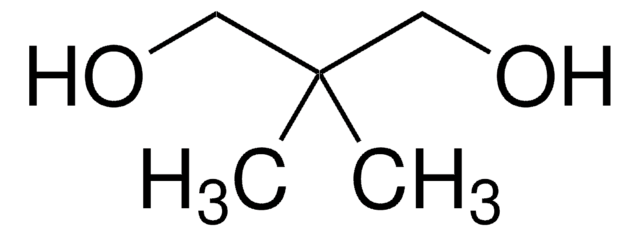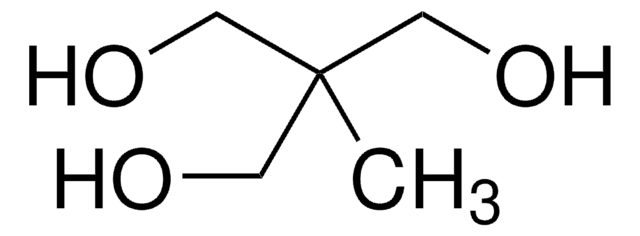148083
1,1,1-Tris(hydroxymethyl)propane
97%
Synonym(s):
2-Ethyl-2-hydroxymethyl-1,3-propanediol, Trimethylolpropane
About This Item
Recommended Products
vapor density
4.8 (vs air)
vapor pressure
<1 mmHg ( 20 °C)
assay
97%
form
(Powder or Crystals or Granules or Chunks)
autoignition temp.
1301 °F
bp
159-161 °C/2 mmHg (lit.)
mp
56-58 °C (lit.)
functional group
hydroxyl
SMILES string
CCC(CO)(CO)CO
InChI
1S/C6H14O3/c1-2-6(3-7,4-8)5-9/h7-9H,2-5H2,1H3
InChI key
ZJCCRDAZUWHFQH-UHFFFAOYSA-N
Looking for similar products? Visit Product Comparison Guide
Related Categories
Application
signalword
Warning
hcodes
Hazard Classifications
Repr. 2
Storage Class
11 - Combustible Solids
wgk_germany
WGK 1
flash_point_f
356.0 °F - Cleveland open cup
flash_point_c
180 °C - Cleveland open cup
ppe
Eyeshields, Gloves, type N95 (US)
Choose from one of the most recent versions:
Already Own This Product?
Find documentation for the products that you have recently purchased in the Document Library.
Customers Also Viewed
Our team of scientists has experience in all areas of research including Life Science, Material Science, Chemical Synthesis, Chromatography, Analytical and many others.
Contact Technical Service














